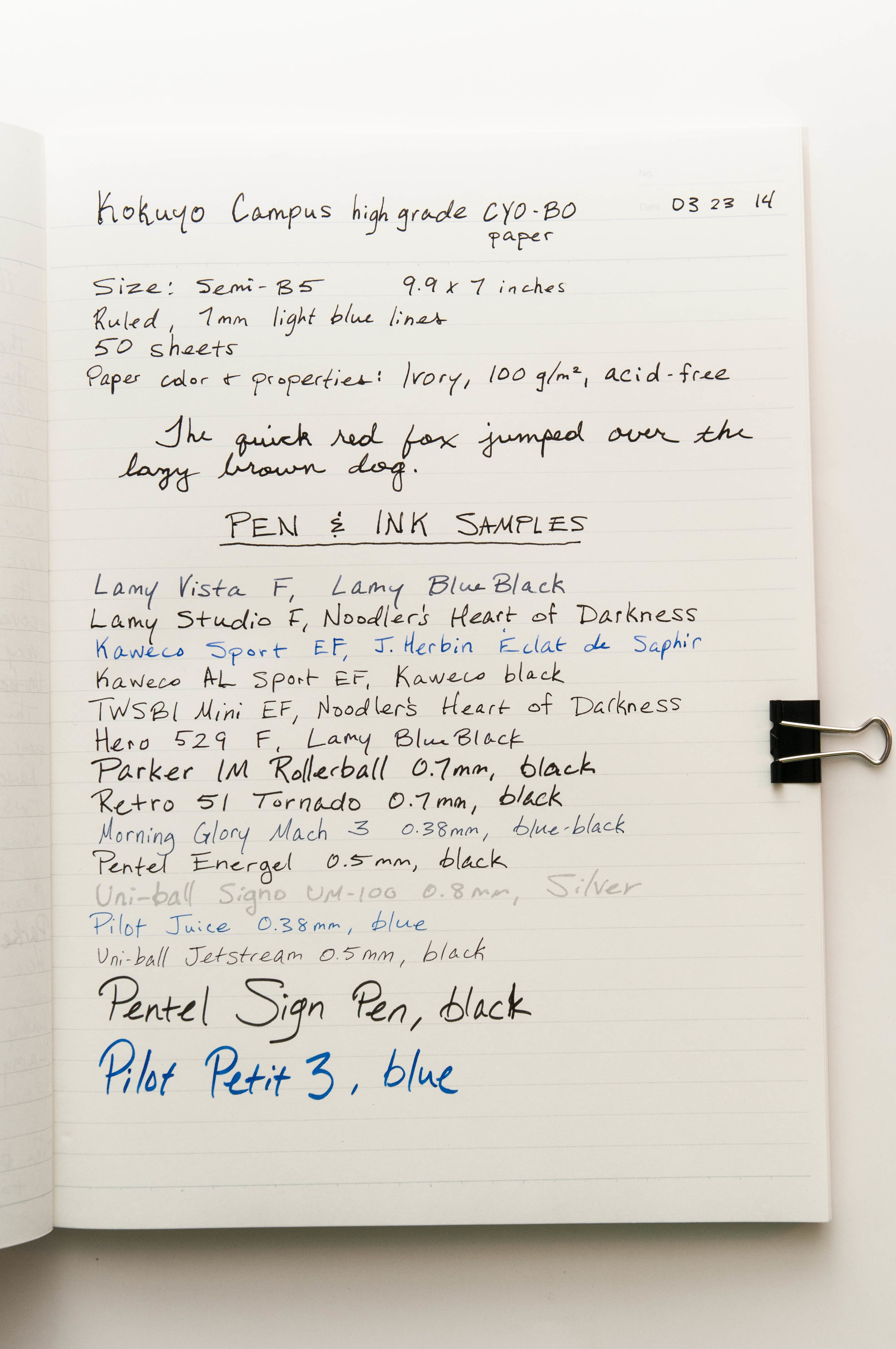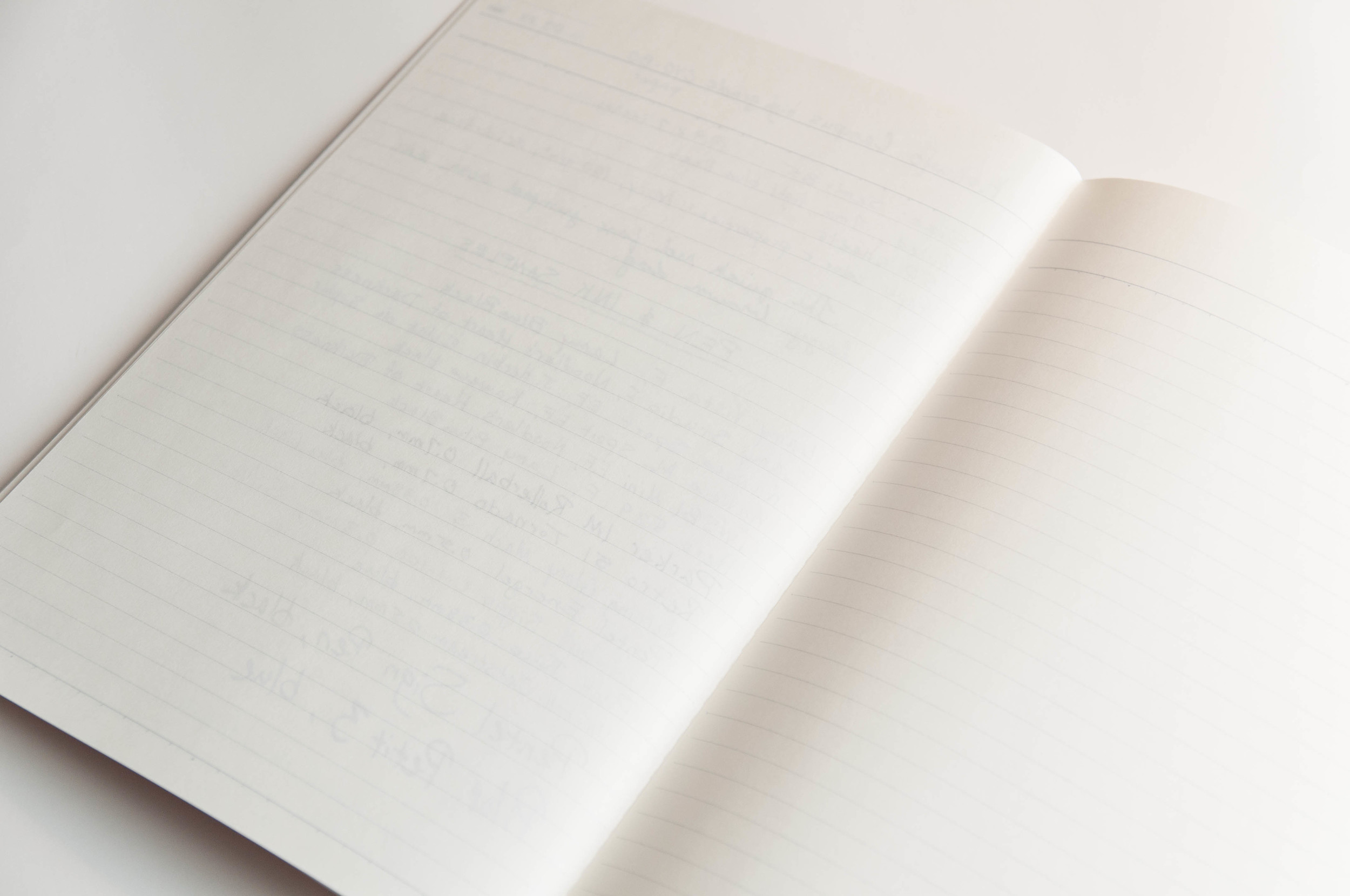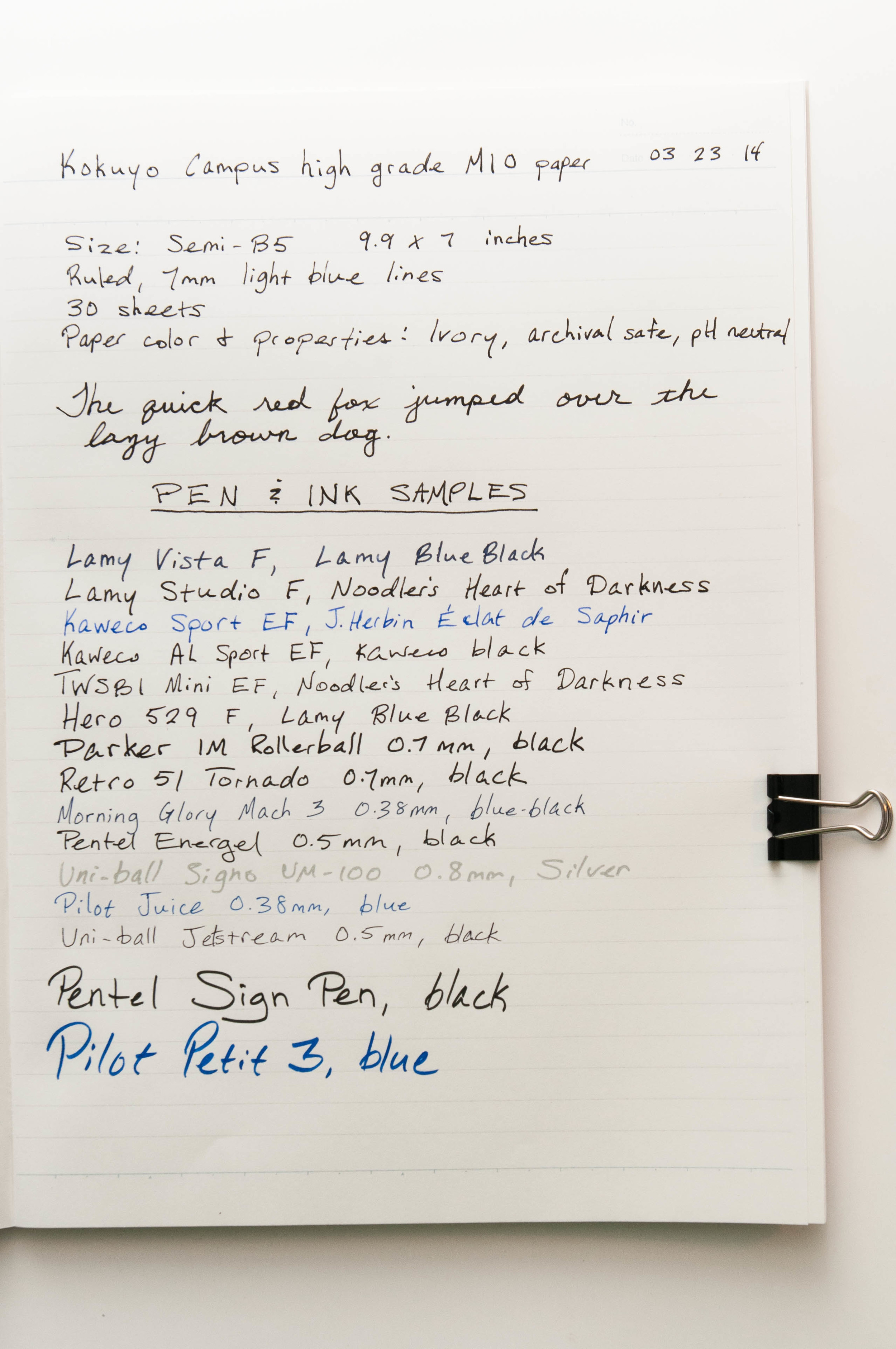I bought a Kokuyo Campus notebook with CYO-BO paper over a year ago with intentions of reviewing it, but Kokuyo had another plan. I'm not sure when it happened, but they stopped selling the high grade notebooks with the CYO-BO paper. This is a shame, but it looks like they're replaced it with another notebook. The Kokuyo Campus high grade with MIO paper. So, which one is better, and is the MIO worth buying now?
The Similarities
The notebooks both share quite a few similarities. From what I can tell, the only differences are the number of pages in the notebook and what kind of paper they use.
Both notebooks are semi-B5 (9.9x7") and have 7mm ruling with subtle blue-gray lines. There's an area at the top of each page for a title or subject, a number, and the date. Each notebook has 30 lines per page.
A complaint of mine for both notebooks is the binding. It's some sort of glue binding, and it makes it difficult for some of the pages to lay flat, causing some wrinkling in the page that you're trying to write on. This wasn't a huge deal since I could bend and abuse the notebook into submission, but it was an annoyance.
Both papers are archive-safe and acid-free. The MIO notebook has a page at the beginning for your name, subject, etc, while the CYO-BO does not.
I mentioned I didn't like the glue binding, but I am a fan of the shiny silver tape that they use to cover the binding on the outside. Both notebooks have covers that are made of slightly light-weight cardstock. They won't hold up well in a back-pack.
The Differences
The only difference in these notebooks is the paper. In a sentence, the CYO-BO paper is thick and velvety, and the MIO is thin and light. They're both smooth and handle inks extremely well – I haven't noticed any feathering – but the paper weight is a major difference.
The CYO-BO notebook is about twice the thickness as the MIO notebook, even though there's only a 20 sheet difference.
CYO-BO Performance
I'll keep this brief since it's no longer for sale. This is a spectacular paper that handled all of my pens and inks with great ease. No feathering, hardly any show-through, and not much feedback. Great paper. I'll be disappointed when I finish this notebook.
CYO-BO Front
CYO-BO Back
MIO Performance
This is a lovely paper. First touch makes you think of the Tomoe River paper. It's thin, light, and smooth. It's not Tomoe River paper, though. Despite being thin paper, there's no feathering at all. There's a good amount of show-through, but that's to be expected for thin paper. Keep in mind, I'm talking about show-through, not bleed-through. I haven't seen any bleed-through.
The paper feels almost slippery with certain pens. Particularly gel pens – they wanted to slide off the page. I like this effect, but it could take some adjustment. Fountain pens felt great and there is just enough tooth to maintain excellent control of the nib.
Kokuyo explains that the MIO paper stands for "Mobile Ideal Original" paper. I'm not sure what that means, but I can vouch for the quality of the paper.
MIO Front
MIO Back
Conclusion
The Kokuyo Campus high grade MIO notebook is an excellent writing tool. It's extremely thin and handles pens and inks with ease. I love the size of semi-B5, but they also sell A5 for this notebook.
The major cause of hesitancy for me is the paper thickness. Being so thin, there's a good amount of show-through on the back sides of the paper. For me, this means I can't use both sides of the sheet. Effectively, this is a 30-page notebook for me, unless I use gel pens that are less than 0.5mm or pencils. Given the price, I don't think this is a good value. Still, it's fun to try and experience the silky smooth paper. Hopefully, Kokuyo will keep this notebook around for a while longer.
JetPens offers the MIO notebooks with blue and red accents in B5 or A5, and as bundles.
(You can find more from Jeff online at Draft Evolution, Twitter, and App.net.)











